A Participatory Framework for Plain Language Clinical Management Guideline Development
Abstract
1. Introduction
Study Rationale and Aims
2. Methods
2.1. Development, Refinement, and Distribution of the CDG Journey Mapping Electronic Questionnaire
2.2. Development of Plain Language CMGs Based on Participatory Health Literacy
3. Results
3.1. E-Questionnaire Participants’ Academic Qualifications and Distribution
3.2. The Perceptions of CMGs among CDG Families and Professionals
3.3. Challenges and Solutions for the Comprehension and Accessibility of CMGs
3.4. CMG-Related Resources Adapted to the CDG Community’s Needs and Preferences to Improve Comprehension and Accessibility
4. Discussion
4.1. Study Strengths and Limitations
4.2. Future Perspectives
5. Conclusions
Supplementary Materials
Author Contributions
Funding
Institutional Review Board Statement
Informed Consent Statement
Acknowledgments
Conflicts of Interest
References
- Field, M.J.; Lohr, K.N. (Eds.) Clinical Practice Guidelines: Directions for a New Program; National Academies Press: Washington, DC, USA, 1990. [Google Scholar]
- Pavan, S.; Rommel, K.; Marquina, M.E.M.; Höhn, S.; Lanneau, V.; Rath, A. Clinical Practice Guidelines for Rare Diseases: The Orphanet Database. PLoS ONE 2017, 12, e0170365. [Google Scholar] [CrossRef] [PubMed]
- Alonso-Coello, P.; Irfan, A.; Solà, I.; Gich, I.; Delgado-Noguera, M.F.; Rigau, D.; Tort, S.; Bonfill, X.; Burgers, J.; Schunemann, H. The quality of clinical practice guidelines over the last two decades: A systematic review of guideline appraisal studies. BMJ Qual. Saf. Health Care 2010, 19, e58. [Google Scholar] [CrossRef] [PubMed]
- Vega, M.B.; Benavent, P.G.; de Val, M.S.I.; Fernández, C.M.; Remón, L.P.; Sanchéz, J.I.M.; Diez, M.P.B.; Mérez, M.P.C.; Armesto, S.G.; del Pozo, S.V.F.; et al. Methodological Handbooks & Toolkit for Clinical Practice Guidelines and Clinical Decision Support Tools for Rare or Low Prevalence and Complex Diseases. European Reference Networks. 2020. Available online: https://www.google.com.hk/url?sa=t&rct=j&q=&esrc=s&source=web&cd=&cad=rja&uact=8&ved=2ahUKEwi5sobXgKr6AhXLmlYBHYccDE0QFnoECAIQAQ&url=https%3A%2F%2Freconnet.ern-net.eu%2Fwp-content%2Fuploads%2Fsites%2F3%2F2022%2F03%2F0.-intro-toolkit-d-b.2.pdf&usg=AOvVaw2DeeVkzNVI97ZLpSapRVca (accessed on 15 September 2022).
- Steeb, T.; Hayani, K.M.; Förster, P.; Liegl, R.; Toussaint, F.; Schlaak, M.; Berking, C.; Heppt, M.V. Guidelines for uveal melanoma: A critical appraisal of systematically identified guidelines using the AGREE II and AGREE-REX instrument. J. Cancer Res. Clin. Oncol. 2020, 146, 1079–1088. [Google Scholar] [CrossRef] [PubMed]
- Pai, M.; Yeung, C.H.T.; Akl, E.A.; Darzi, A.; Hillis, C.; Legault, K.; Meerpohl, J.J.; Santesso, N.; Taruscio, D.; Verhovsek, M.; et al. Strategies for eliciting and synthesizing evidence for guidelines in rare diseases. BMC Med. Res. Methodol. 2019, 19, 67. [Google Scholar] [CrossRef]
- Kremp, O.; Dosquet, P.; Rath, A. Professional clinical guidelines for rare diseases: Methodology. Orphanet J. Rare Dis. 2012, 7, A12. [Google Scholar] [CrossRef]
- Griffiths, P.; Strong, K.; Gardner, S.; Day, R.; Harrison, C.; Bronwyn, K.; Metcalfe, K.; Brunner, H.; Donnai, D.; Dallapiccola, B.; et al. DYSCERNE: Developing clinical management guidelines for selected dysmorphic syndromes. Orphanet J. Rare Dis. 2010, 5, P20. [Google Scholar] [CrossRef][Green Version]
- Watson, J.C. Talking the Talk: Enhancing Clinical Ethics with Health Literacy Best Practices. HEC Forum 2019, 31, 177–199. [Google Scholar] [CrossRef]
- Sørensen, K.; Van den Broucke, S.; Fullam, J.; Doyle, G.; Pelikan, J.; Slonska, Z.; Brand, H.; (HLS-EU) Consortium Health Literacy Project European. Health literacy and public health: A systematic review and integration of definitions and models. BMC Public Health 2012, 12, 80. [Google Scholar] [CrossRef]
- Simmons, R.A.; Cosgrove, S.C.; Romney, M.C.; Plumb, J.D.; Brawer, R.O.; Gonzalez, E.T.; Fleisher, L.G.; Moore, B.S. Health Literacy: Cancer Prevention Strategies for Early Adults. Am. J. Prev. Med. 2017, 53 (Suppl. S1), S73–S77. [Google Scholar] [CrossRef]
- Ondruskova, N.; Cechova, A.; Hansikova, H.; Honzik, T.; Jaeken, J. Congenital disorders of glycosylation: Still “hot” in 2020. Biochim. et Biophys. Acta (BBA)-Gen. Subj. 2020, 1865, 129751. [Google Scholar] [CrossRef]
- Ferreira, C.R.; Altassan, R.; Marques-Da-Silva, D.; Francisco, R.; Jaeken, J.; Morava, E. Recognizable phenotypes in CDG. J. Inherit. Metab. Dis. 2018, 41, 541–553. [Google Scholar] [CrossRef] [PubMed]
- Marques-Da-Silva, D.; Ferreira, V.D.R.; Monticelli, M.; Janeiro, P.; Videira, P.; Witters, P.; Jaeken, J.; Cassiman, D. Liver involvement in congenital disorders of glycosylation (CDG). A systematic review of the literature. J. Inherit. Metab. Dis. 2017, 40, 195–207. [Google Scholar] [CrossRef] [PubMed]
- Marques-Da-Silva, D.; Francisco, R.; Ferreira, V.D.R.; Forbat, L.; Lagoa, R.; Videira, P.A.; Witters, P.; Jaeken, J.; Cassiman, D. An Electronic Questionnaire for Liver Assessment in Congenital Disorders of Glycosylation (LeQCDG): A Patient-Centered Study. JIMD Rep. 2018, 44, 55–64. [Google Scholar] [CrossRef] [PubMed]
- Pascoal, C.; Francisco, R.; Ferro, T.; Ferreira, V.D.R.; Jaeken, J.; Videira, P.A. CDG and immune response: From bedside to bench and back. J. Inherit. Metab. Dis. 2019, 43, 90–124. [Google Scholar] [CrossRef]
- Francisco, R.; Pascoal, C.; Marques-Da-Silva, D.; Brasil, S.; Pimentel-Santos, F.M.; Altassan, R.; Jaeken, J.; Grosso, A.R.; Ferreira, V.D.R.; Videira, P.A. New Insights into Immunological Involvement in Congenital Disorders of Glycosylation (CDG) from a People-Centric Approach. J. Clin. Med. 2020, 9, 2092. [Google Scholar] [CrossRef]
- De Freitas, C.; Dos Reis, V.; Silva, S.; Videira, P.A.; Morava, E.; Jaeken, J. Public and patient involvement in needs assessment and social innovation: A people-centred approach to care and research for congenital disorders of glycosylation. BMC Health Serv. Res. 2017, 17, 682. [Google Scholar] [CrossRef]
- Cardão, C.; Barros, L.; Francisco, R.; Silva, D.; Ferreira, V.R. Experiences of parents with children with congenital disorders of glycosylation: What can we learn from them? Disabil. Health J. 2021, 14, 101065. [Google Scholar] [CrossRef]
- Altassan, R.; Péanne, R.; Jaeken, J.; Barone, R.; Bidet, M.; Borgel, D.; Brasil, S.; Cassiman, D.; Cechova, A.; Coman, D.; et al. International clinical guidelines for the management of phosphomannomutase 2-congenital disorders of glycosylation: Diagnosis, treatment and follow up. J. Inherit. Metab. Dis. 2019, 42, 5–28. [Google Scholar] [CrossRef]
- Čechová, A.; Altassan, R.; Borgel, D.; Bruneel, A.; Correia, J.; Girard, M.; Harroche, A.; Kiec-Wilk, B.; Mohnike, K.; Pascreau, T.; et al. Consensus guideline for the diagnosis and management of mannose phosphate isomerase-congenital disorder of glycosylation. J. Inherit. Metab. Dis. 2020, 43, 671–693. [Google Scholar] [CrossRef]
- Altassan, R.; Radenkovic, S.; Edmondson, A.C.; Barone, R.; Brasil, S.; Cechova, A.; Coman, D.; Donoghue, S.; Falkenstein, K.; Ferreira, V.; et al. International consensus guidelines for phosphoglucomutase 1 deficiency (PGM1-CDG): Diagnosis, follow-up, and management. J. Inherit. Metab. Dis. 2020, 44, 148–163. [Google Scholar] [CrossRef]
- Crowe, A.L.; McKnight, A.J.; McAneney, H. Communication Needs for Individuals With Rare Diseases Within and Around the Healthcare System of Northern Ireland. Front. Public Health 2019, 7, 236. [Google Scholar] [CrossRef] [PubMed]
- Zurynski, Y.; Deverell, M.; Dalkeith, T.; Johnson, S.; Christodoulou, J.; Leonard, H.; Elliott, E.J.; APSU Rare Diseases Impacts on Families Study Group. Australian children living with rare diseases: Experiences of diagnosis and perceived consequences of diagnostic delays. Orphanet J. Rare Dis. 2017, 12, 68. [Google Scholar] [CrossRef] [PubMed]
- Davies, W. Insights into rare diseases from social media surveys. Orphanet J. Rare Dis. 2016, 11, 1–5. [Google Scholar] [CrossRef]
- Badiu, C.; Bonomi, M.; Borshchevsky, I.; Cools, M.; Craen, M.; Ghervan, C.; Hauschild, M.; Hershkovitz, E.; Hrabovszky, E.; Juul, A.; et al. Developing and evaluating rare disease educational materials co-created by expert clinicians and patients: The paradigm of congenital hypogonadotropic hypogonadism. Orphanet J. Rare Dis. 2017, 12, 57. [Google Scholar] [CrossRef]
- Minu, H. Stakeholder Engagement, 1st ed.; Dahinden, M., Paschke, M., Eds.; Zurich-Basel Plant Science Center: Zürich, Switzerland, 2020. [Google Scholar] [CrossRef]
- Kalichman, S.C.; Shkembi, B.; Kalichman, M.O.; Eaton, L.A. Trust in health information sources and its associations with COVID-19 disruptions to social relationships and health services among people living with HIV. BMC Public Health 2021, 21, 817. [Google Scholar] [CrossRef]
- Figueiras, M.J.; Ghorayeb, J.; Coutinho, M.V.C.; Marôco, J.; Thomas, J. Levels of Trust in Information Sources as a Predictor of Protective Health Behaviors During COVID-19 Pandemic: A UAE Cross-Sectional Study. Front. Psychol. 2021, 12, 633550. [Google Scholar] [CrossRef]
- Scanlon, J.K.; Wofford, L.; Fair, A.; Philippi, D. Predictors of Participation in Clinical Research. Nurs. Res. 2021, 70, 289–297. [Google Scholar] [CrossRef] [PubMed]
- Warde, F.; Papadakos, J.; Papadakos, T.; Rodin, D.; Salhia, M.; Giuliani, M. Plain language communication as a priority competency for medical professionals in a globalized world. Can. Med. Educ. J. 2018, 9, e52. [Google Scholar] [CrossRef]
- Belim, C.; de Almeida, C.V. Communication Competences are the Key! A Model of Communication for the Health Professional to Optimize the Health Literacy—Assertiveness, Clear Language and Positivity. J. Health Commun. 2018, 3, 1–13. [Google Scholar] [CrossRef]
- De Almeida, C.V.; Belim, C. Health Professionals’ Communication Competences Decide Patients’ Well-being: Proposal for a Communication Model. In Advances in Public Relations and Communication Management; Emerald Publishing Limited: Bingley, UK, 2021; pp. 201–222. [Google Scholar] [CrossRef]
- De Wit, M.P.T.; Smolen, J.S.; Gossec, L.; Van Der Heijde, D.M.F.M. Treating rheumatoid arthritis to target: The patient version of the international recommendations. Ann. Rheum. Dis. 2011, 70, 891–895. [Google Scholar] [CrossRef]
- De Santis, M.; Hervas, C.; Weinman, A.; Bosi, G.; Bottarelli, V. Patient empowerment of people living with rare diseases. Its contribution to sustainable and resilient healthcare systems. Ann. Ist. Super Sanità 2019, 55, 283–291. [Google Scholar] [CrossRef] [PubMed]
- Pushparajah, D.S.; Manning, E.; Michels, E.; Arnaudeau-Bégard, C. Value of Developing Plain Language Summaries of Scientific and Clinical Articles: A Survey of Patients and Physicians. Ther. Innov. Regul. Sci. 2018, 52, 474–481. [Google Scholar] [CrossRef] [PubMed]
- Chahardah-Cherik, S.; Gheibizadeh, M.; Jahani, S.; Cheraghian, B. The Relationship between Health Literacy and Health Promoting Behaviors in Patients with Type 2 Diabetes. J. Health Lit. 2018, 6, 65–75. [Google Scholar] [CrossRef]
- Panagioti, M.; Skevington, S.M.; Hann, M.; Howells, K.; Blakemore, A.; Reeves, D.; Bower, P. Effect of health literacy on the quality of life of older patients with long-term conditions: A large cohort study in UK general practice. Qual. Life Res. 2018, 27, 1257–1268. [Google Scholar] [CrossRef] [PubMed]
- Rowlands, G.; Shaw, A.; Jaswal, S.; Smith, S.; Harpham, T. Health literacy and the social determinants of health: A qualitative model from adult learners. Health Promot. Int. 2015, 32, 130–138. [Google Scholar] [CrossRef] [PubMed]
- Raghupathi, V.; Raghupathi, W. The influence of education on health: An empirical assessment of OECD countries for the period 1995–2015. Arch. Public Health 2020, 78, 20. [Google Scholar] [CrossRef]
- Hahn, R.A.; Truman, B.I. Education Improves Public Health and Promotes Health Equity. Int. J. Health Serv. 2015, 45, 657–678. [Google Scholar] [CrossRef]
- Garcia-Codina, O.; Juvinyà-Canal, D.; Amil-Bujan, P.; Bertran-Noguer, C.; Gonzàlez, S.J.S.; Masachs-Fatjo, E.; Santaeugènia, S.J.; Magrinyà-Rull, P.; Saltó-Cerezuela, E. Determinants of health literacy in the general population: Results of the Catalan health survey. BMC Public Health 2019, 19, 1112. [Google Scholar] [CrossRef]
- Scharpf, J. The Challenge of Guideline Development When Evidence Is Sparse. Otolaryngol. Head Neck Surg. 2017, 157, 383–384. [Google Scholar] [CrossRef]
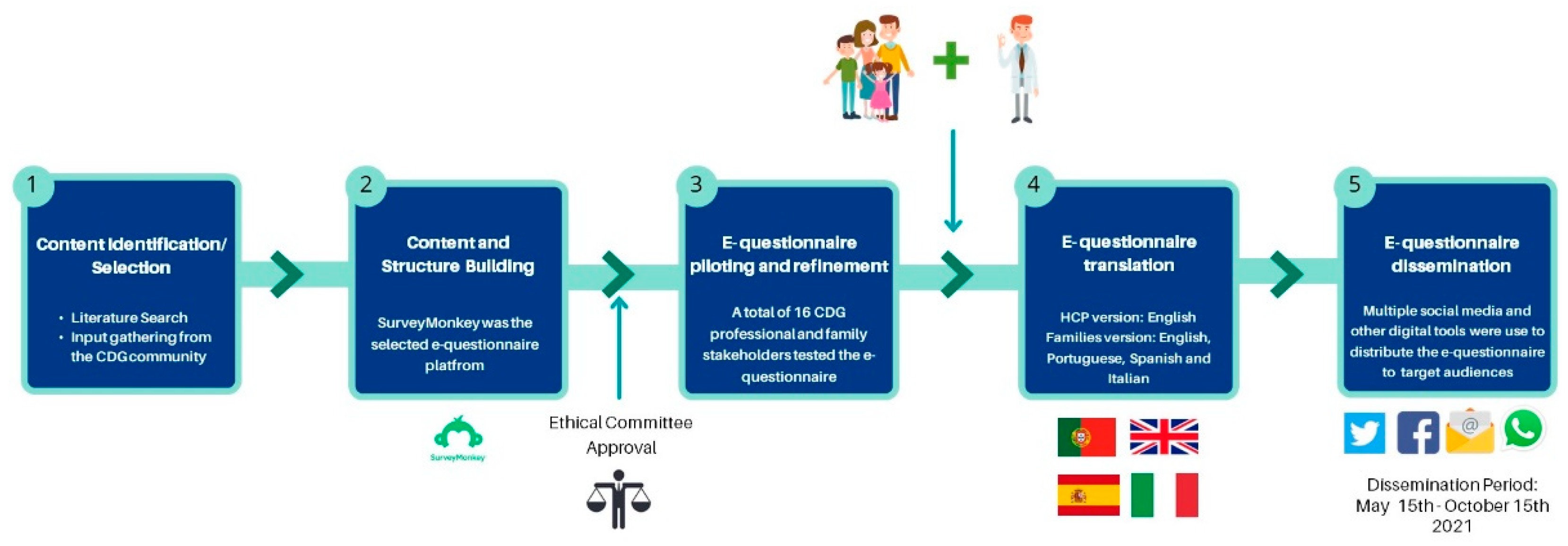
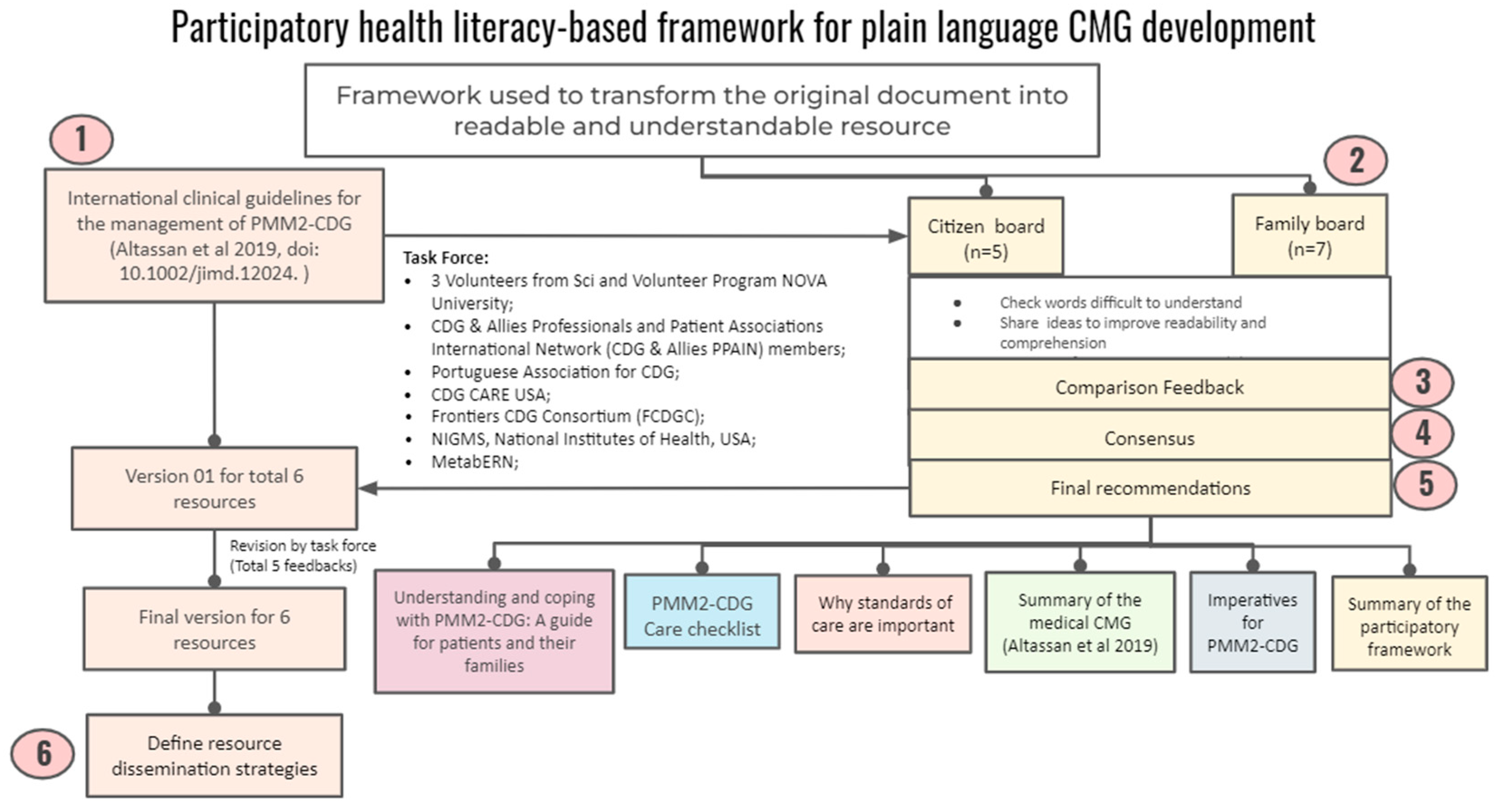
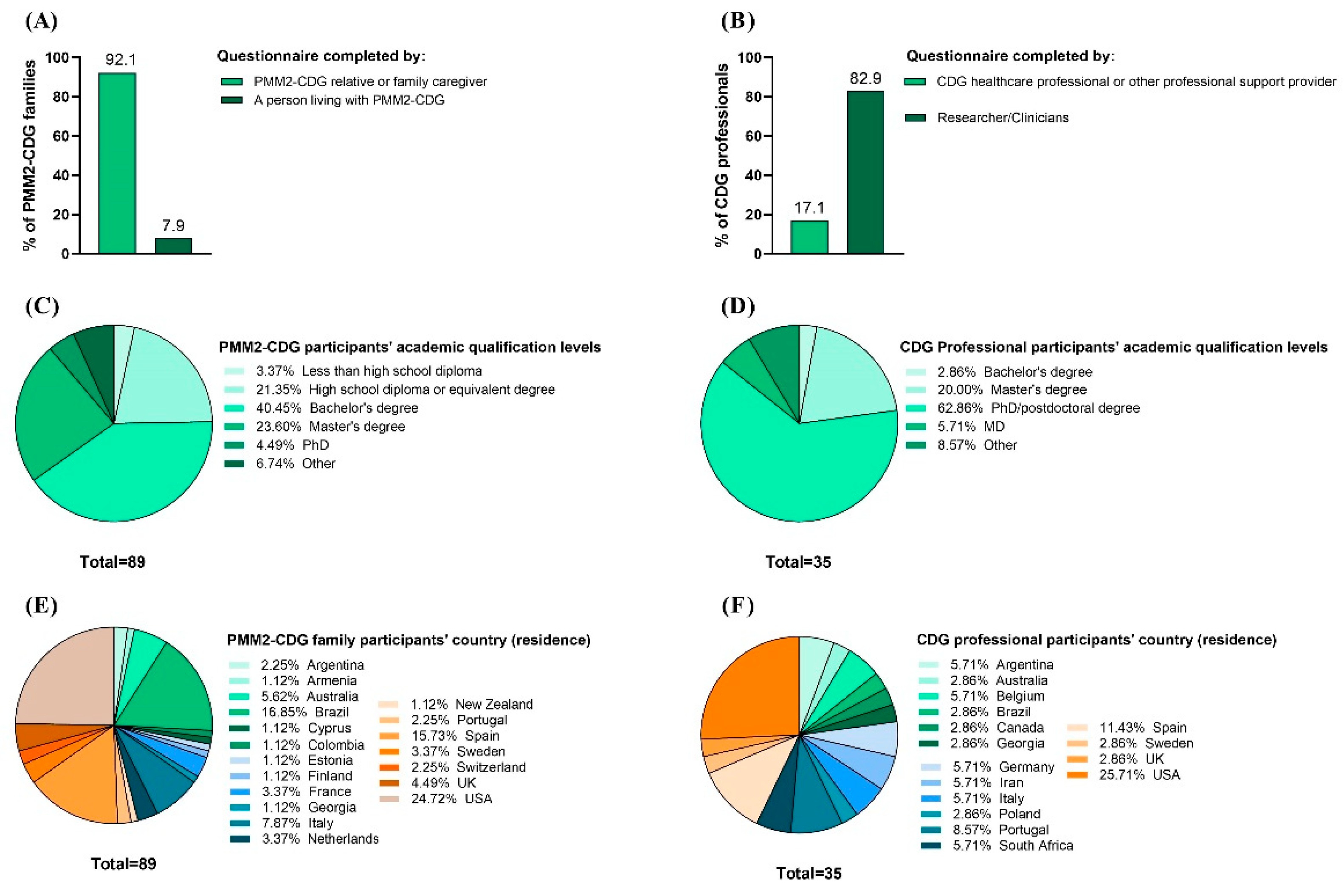
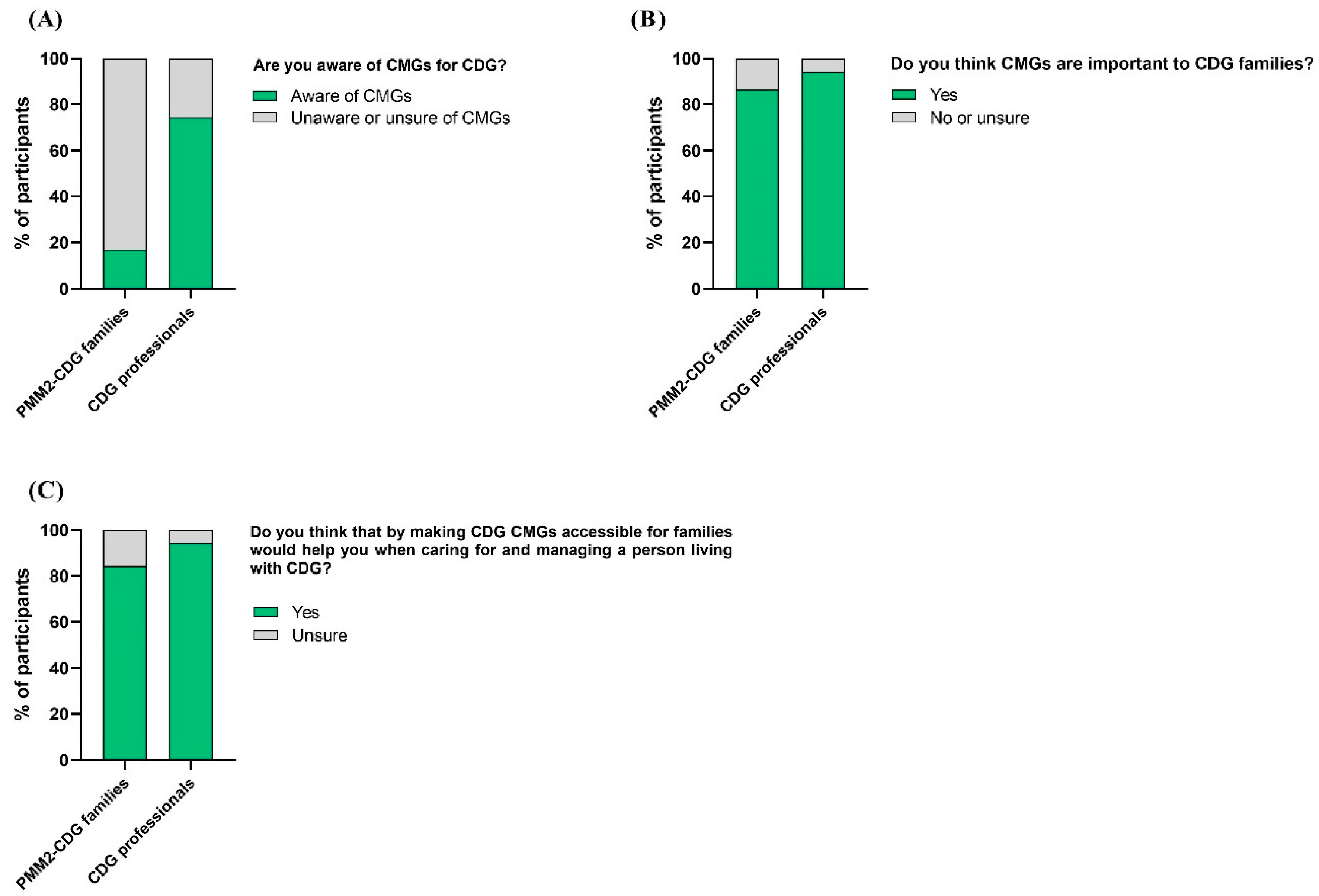
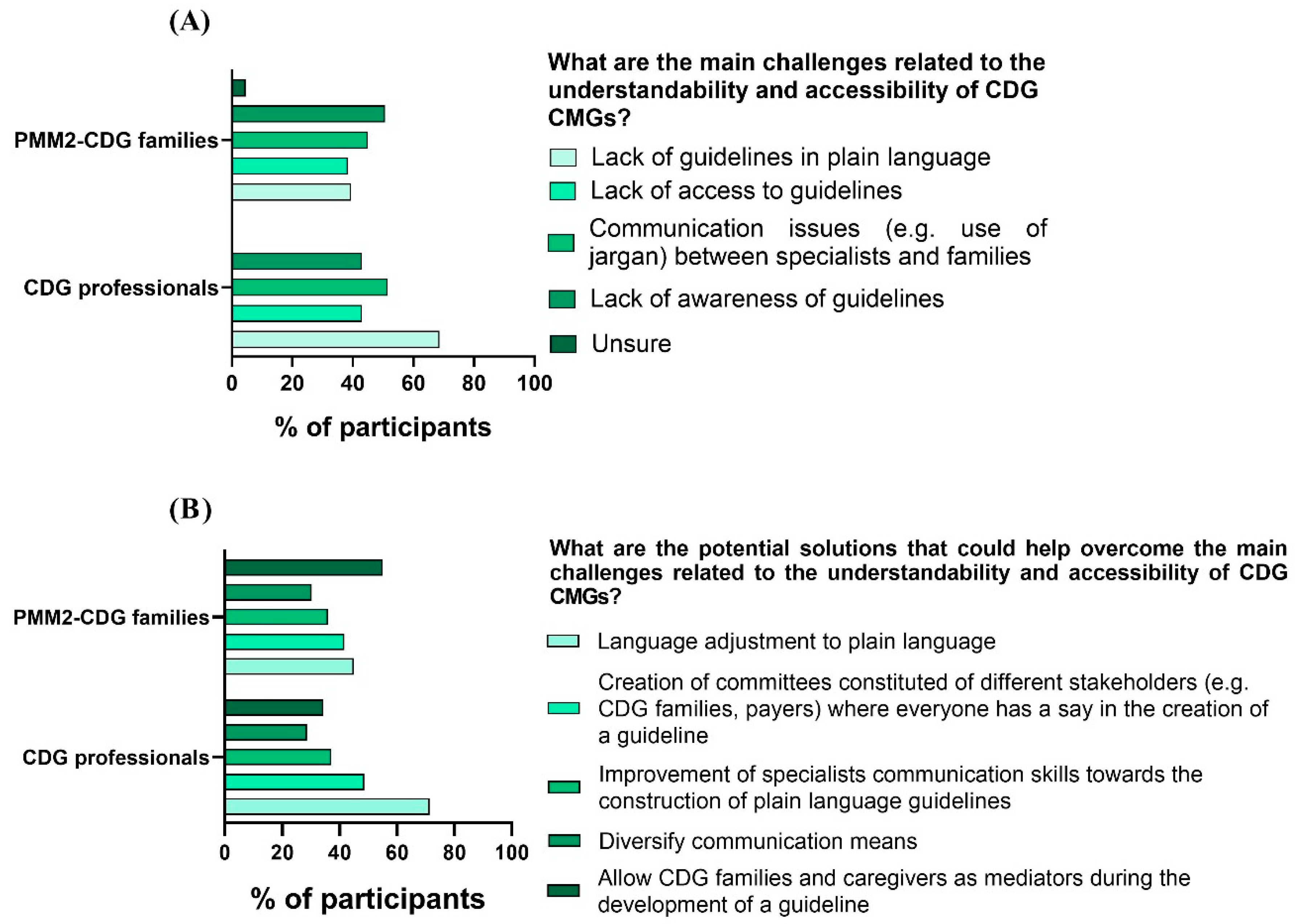
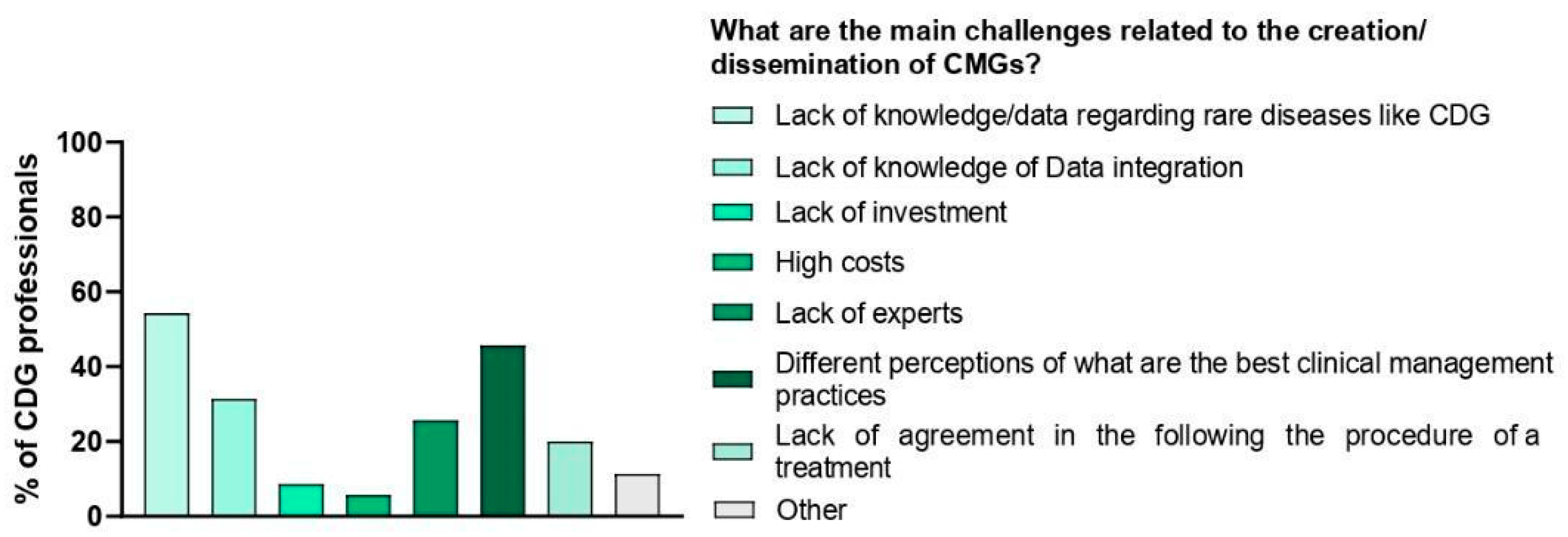
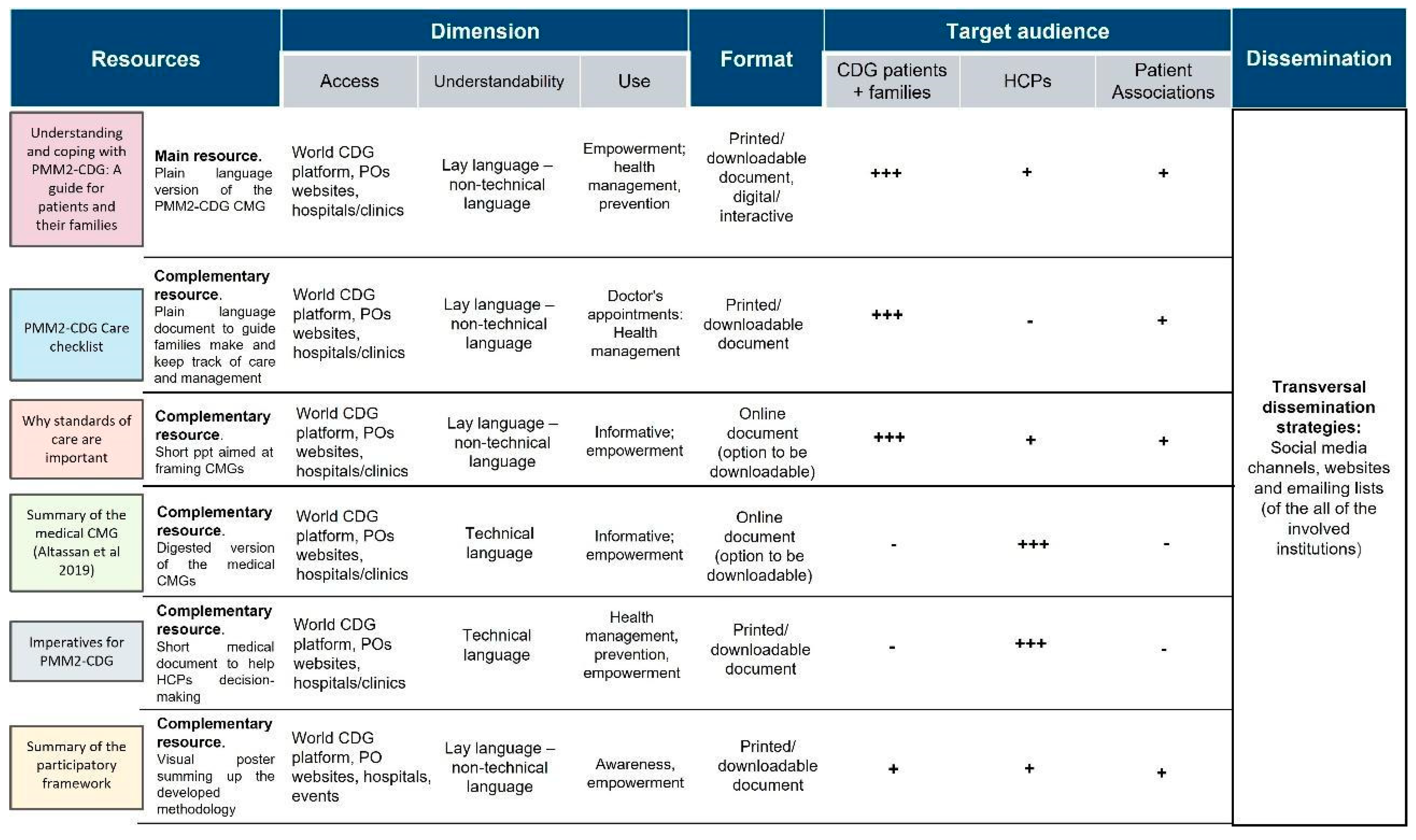
Publisher’s Note: MDPI stays neutral with regard to jurisdictional claims in published maps and institutional affiliations. |
© 2022 by the authors. Licensee MDPI, Basel, Switzerland. This article is an open access article distributed under the terms and conditions of the Creative Commons Attribution (CC BY) license (https://creativecommons.org/licenses/by/4.0/).
Share and Cite
Francisco, R.; Alves, S.; Gomes, C.; Granjo, P.; Pascoal, C.; Brasil, S.; Neves, A.; Santos, I.; Miller, A.; Krasnewich, D.; et al. A Participatory Framework for Plain Language Clinical Management Guideline Development. Int. J. Environ. Res. Public Health 2022, 19, 13506. https://doi.org/10.3390/ijerph192013506
Francisco R, Alves S, Gomes C, Granjo P, Pascoal C, Brasil S, Neves A, Santos I, Miller A, Krasnewich D, et al. A Participatory Framework for Plain Language Clinical Management Guideline Development. International Journal of Environmental Research and Public Health. 2022; 19(20):13506. https://doi.org/10.3390/ijerph192013506
Chicago/Turabian StyleFrancisco, Rita, Susana Alves, Catarina Gomes, Pedro Granjo, Carlota Pascoal, Sandra Brasil, Alice Neves, Inês Santos, Andrea Miller, Donna Krasnewich, and et al. 2022. "A Participatory Framework for Plain Language Clinical Management Guideline Development" International Journal of Environmental Research and Public Health 19, no. 20: 13506. https://doi.org/10.3390/ijerph192013506
APA StyleFrancisco, R., Alves, S., Gomes, C., Granjo, P., Pascoal, C., Brasil, S., Neves, A., Santos, I., Miller, A., Krasnewich, D., Morava, E., Lam, C., Jaeken, J., Videira, P. A., & dos Reis Ferreira, V. (2022). A Participatory Framework for Plain Language Clinical Management Guideline Development. International Journal of Environmental Research and Public Health, 19(20), 13506. https://doi.org/10.3390/ijerph192013506






